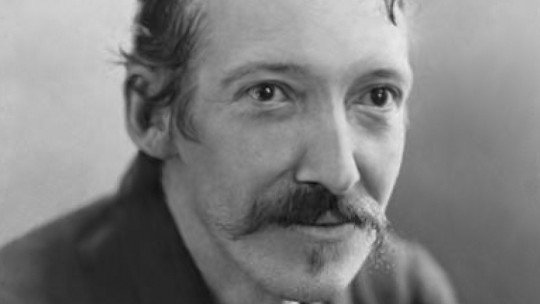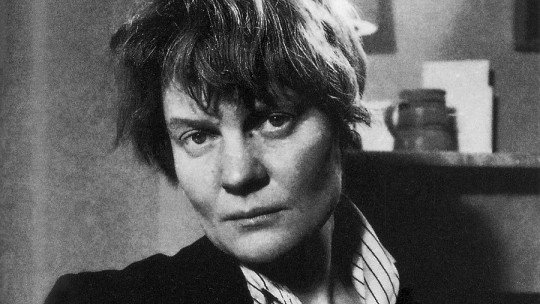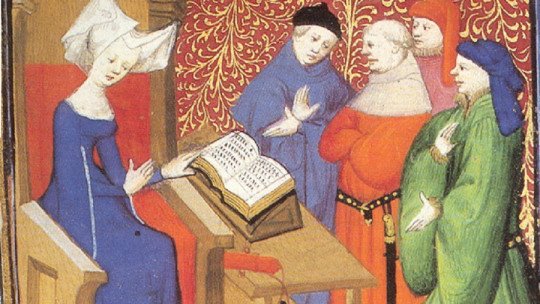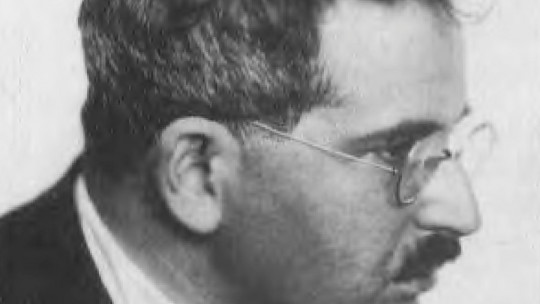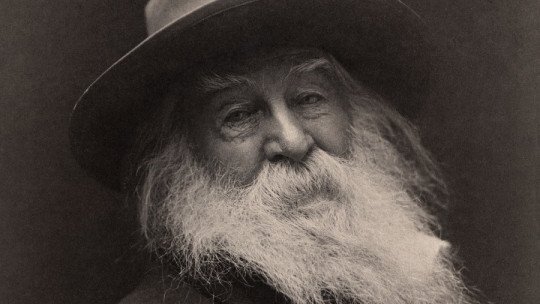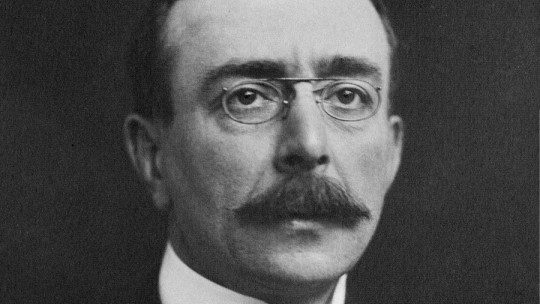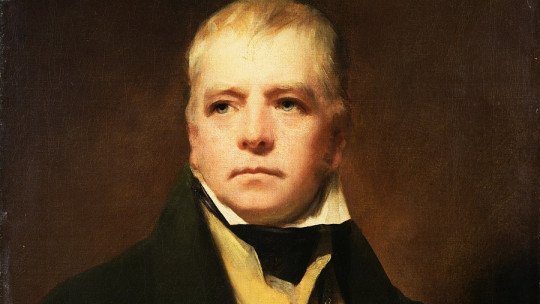
In 1817, the novel Rob Roy It sold out its circulation of 10,000 copies in just fifteen days. This is outrageous for the time; The average number of copies of an edition at the beginning of the 19th century was approximately 800. Who was the author who had achieved such success?
His name was Walter Scott, a Scot from a wealthy family who wrote historical novels and poems for pure fun, since his civil servant salary was enough for him to live comfortably. In fact, Scott published his books anonymously so as not to “tarnish” his prestige, although everyone knew whose pen was behind them.
What was it about the work of this writer and poet that the public liked so much? In today’s article, we review the life of what is considered the “inventor” of the historical novel, Sir Walter Scott.
Brief biography of Walter Scott, the romantic poet who “invented” the historical novel
Jane Austen herself (1775-1817) lamented that Sir Walter Scott wrote, since he had no need to write for money, since he had a salary (not insignificant) by virtue of his position as bailiff and clerk of the courts of justice. According to the writer, her activity took away opportunities from people who, like her, wanted to live off her pen. However, even the author of Pride and Prejudice had to bow to the evidence: Walter Scott was good, too good.
The boy who listened to stories
Born in Edinburgh in August 1771, Walter Scott was the son of a lawyer and the daughter of a respectable doctor. When he was very young, he suffered from poliomyelitis, which left him with an incipient limp in his right leg forever. To attempt a desperate cure, his parents sent the boy to his grandparents’ farm, located in the Scottish Lowlands, in what is called the Borders; that is, the border with England.
There, immersed in a rural world full of stories and legends told by the fire, Little Walter learned to love the stories his grandparents and the inhabitants of those lands told him This introduced into his soul a passion for pseudo-historical stories that he would never abandon, and that would be so useful in his future career as a poet and writer.
However, his literary activity was not immediate. Already an intelligent and ardent young man, he enters the University of Edinburgh to follow in his father’s footsteps (where, by the way, he is taught by David Hume, the great philosopher’s nephew). He graduates in Law and joins his father’s law firm, for which he soon carries out an unpleasant mission: he must go to the Highlands (the famous Scottish Highlands) to evict a family that has not paid their debt. .
A first love in the purest romantic style
The year is 1796, and from Germany come the new winds of Romanticism. England joins the new artistic-literary movement (after all, the monopoly on classicism is in Italy and France) and Scott begins to translate Goethe into English.
The love that he felt in his childhood is then awakened in the young man, which drives him to sing the ancient deeds of Scotland’s past Let us remember that one of the characteristics of Romanticism is to praise the nation’s past, regardless of whether, to do so, history is falsified or slightly changed.
In those years, the young Walter Scott fell in love with a certain Williamina Belsches (1776-1810), the daughter of a lawyer with whom the Scott law firm is in a dispute. The ardent boy asks her to marry him repeatedly, and each time, Williamina gives him an ambiguous answer, which Scott apparently interprets as a yes. When he returns from his trip through the Highlands, our author watches in despair as she falls in love with a baronet, William Forbes, whom she eventually marries. To make matters worse, the nobleman in question is a friend of Walter Scott.
The young poet’s broken heart does not prevent him from continuing with his literary task; rather, he encourages her. Because what better inspiration for a romantic writer than unrequited love? In 1802 his first work appeared, Scottish Border trovasa compilation of ballads inspired by ancient Scottish songs This collection of poems is followed by The song to the last troubadourpublished in 1805, and The Lady of the Lakefrom 1810, which are brilliant successes and establish Walter Scott as the new fashionable bard.
The “inventor” of the historical novel?
Encouraged by his early literary successes, Scott decides to pursue his career as a writer, which he combines with his work as a crown official. In 1797, having overcome his disappointment in love, he married Margaret Charlotte Charpentier (1770-1826), a lady of French origin whom he met at the Gilsland Spa, near the famous Hadrian’s Wall. Margaret would be her faithful companion until her death in 1826.
It is precisely his position as sheriff of Selkirk County and his position as clerk of courts that pushes Walter Scott to publish his works under anonymity. Believe it or not, at that time writing was not highly regarded in high circles, much less novel writing. Scott feared, then, that his literary activity would overshadow his status. The decade of 1810 and, above all, the 1820 are extremely fruitful for our author.
In 1814 his first historical novel appeared, waverley, set in 1745, during the fighting between the English and the Scots. The book is a tremendous success and establishes Scott as the great master of historical narrative, to which, from then on, he will dedicate himself zealously.
Much has been said about Walter Scott as the “father” of the historical novel. While it is true that his works (especially one of his masterpieces, Ivanhoe) laid the foundations for the genre, it is no less true that there were other previous authors who cultivated it, such as, for example, the German novelist Benedikte Naubert (1752- 1819), author of more than fifty historical novels and who, unfortunately, is currently completely forgotten in literature. Part of his silence is due, precisely, to the fact that Benedikte published his works anonymously and that, unlike Scott (whose authorship everyone knew, although it was not official), it was not known that his name was behind it. of his novels until shortly before his death.
Big hopes
In 1820, with the publication of Ivanhoe, Walter Scott achieved unprecedented fame in the history of English literature. That same year he was granted the title of Baronet of Abbotsford, so Sir was added to his name. He and his family (Walter, Margaret and his five children) lived comfortably thanks to his income as a civil servant, some income they had left and, above all, the sales of Walter’s books, which were quite a few. . Everything seemed to be going, in fact, too much good.
Eager to also establish his own business, Scott founded the publishing house Constable with a partner, who will henceforth be in charge of publishing his books. However, business was not going well, and in 1825 he declared bankruptcy. Faced with a pressing debt (he owes no less than 130,000 pounds), the writer is forced to put his assets in trust. The pressure is such that, the following year, Margaret dies, and Scott receives another hard blow that will leave a deep mark on his spirit.
Exactly the same year as his beloved wife’s death, the public officially knows the name of the author of his favorite novels, although, as we have already mentioned, it has always been an open secret. In 1825 his other well-known novel had appeared, The talisman, set in the Third Crusade. Tireless, Scott writes and writes, until the end. In 1832 he suffered a stroke while he was at his home in Abbotsford, which caused his rapid death. His remains are solemnly dismissed by a crowd of readers who, with him, lose the great teller of his dreams.
Symbol of Romanticism
Worshiped by romantic England as a true god of letters, Walter Scott experienced his decline at the beginning of the 20th century, especially after the First World War. Taste had changed, and his language, flowery and bombastic, no longer had a place for the new century full of avant-garde. The writer and critic Edward Morgan Forster (1879-1970) was especially harsh on him in his essay Aspects of the Novel (1927), in which he highlighted him as an author of slow and heavy novels.
Currently, Walter Scott has regained the place he deserves in literature. And, beyond personal tastes, his work is a prodigy of imagination that combines history and fantasy in incomparable settings and with unforgettable characters, such as the brave Rebecca (Ivanhoe) or Jeanie Deans (The heart of Mid-Lothian). The authors of historical novels owe a debt, and no small one, to the great Scottish bard.


